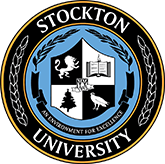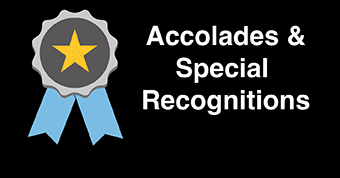Scholarly Activities

Scholarly Activities
Faculty Present at International Gerontological Conference
Stockton faculty made quite the showing at the Gerontological Society of America's Annual Scientific Meeting (GSA) Nov. 13-16, 2024, in Seattle, Washington, where they presented symposium papers and posters on various topics and were among distinguished honorees. The international conference hosted over 4,500 practitioners, scholars, administrators, policymakers, and educators in gerontology from over 40 countries, with this year's theme being "The Fortitude Factor."
Stockton Professor Emeritus of Psychology and founding director of the Stockton Center on Successful Aging (SCOSA) David Burdick received the Mildred M. Seltzer Distinguished Service Honor from the Academy for Gerontology in Higher Education (AGHE).
Burdick and Christine Ferri, director of SCOSA and associate professor of Psychology, co-authored a presentation, "Building Resilience and Grit in Higher Education's Own Climate Crisis." Speaking to a room of faculty, staff and administrators involved in running centers and programs on aging, Ferri emphasized the importance of a robust center on aging as a hub for community outreach and research: "What we do is in everybody's lives."
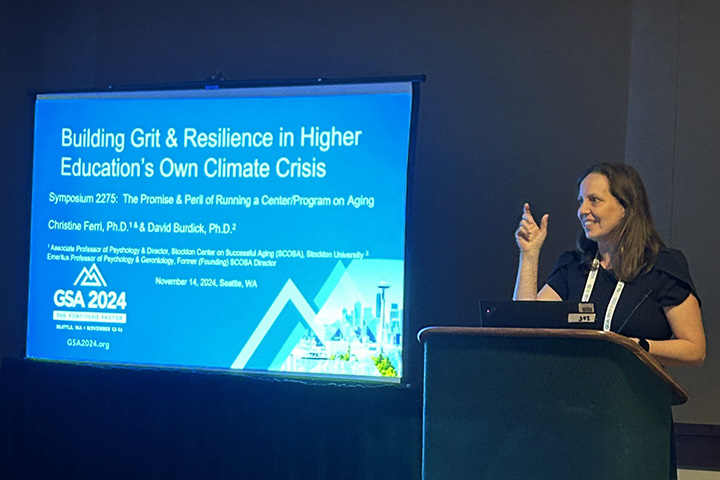
Duo (Helen) Wei, professor of Computer Science and faculty associate in SCOSA, was the lead author of two presentations at GSA. She delivered a talk, "Intergenerational Workshop to Empower Older Adults in Smart Technologies," at the symposium on Intergenerational Service: Extending Age Inclusivity in and Beyond the Classroom. Wei shared her Medical Informatics class's Intergenerational service-learning projects with South Jersey Older Adult Communities.
Kaite Yang, associate professor of Psychology and coordinator of the Childhood Studies Minor, co-authored a poster presentation with Ferri and Princeton University Professor Emeritus Joan Girgus, "Changes in Depressive Symptoms Across Middle and Older Adulthood in the ORANJ BOWL Longitudinal Study of Aging." Their research examined the well-known gender disparity in depression using advanced longitudinal modeling methods to track changes in symptoms over 13 years.
"Attending and presenting at GSA was invigorating. Our scholarly work benefits from the connections we make, the feedback we receive from experts, and participating in current conversations in our academic fields at conferences like this," concluded Yang.
Abernathy, Balasco Publish Award-Winning Textbook
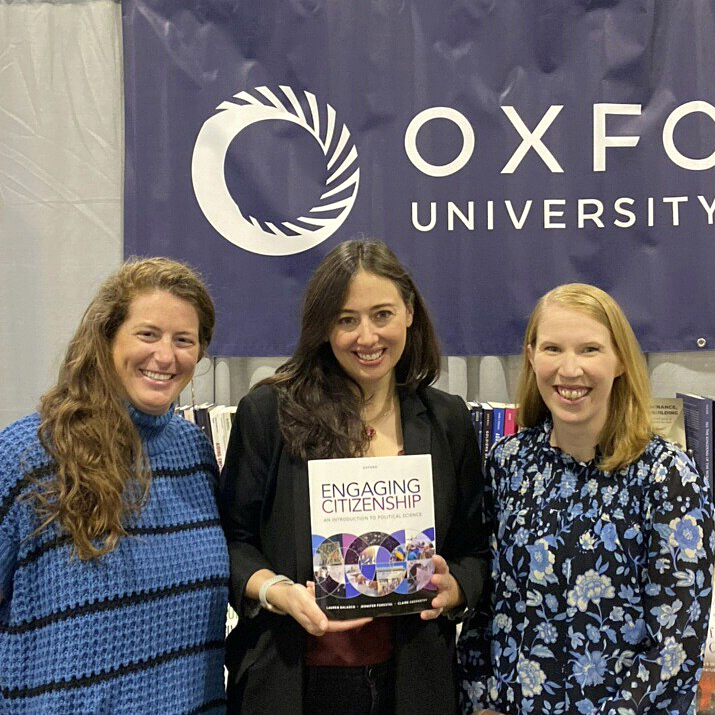
When you look at a textbook, you see its cover, the words on its pages, and even the space it may take up on your desk, but you may not realize what goes into creating it. Stockton Associate Professors of Political Science Claire Abernathy and Lauren Balasco, along with Jennifer Forestal, former professor at Stockton, co-authored "Engaging Citizenship," an introduction to Political Science textbook, and they became very familiar with the intricacies of this process.
Notably, "Engaging Citizenship" was one of 19 textbooks awarded the “Promising New Textbook Award" by the Textbook & Academic Authors Association (TAA) in April, an award specifically given to first editions — those just entering the academic world. This recognition highlights textbooks that bring fresh ideas, innovative instruction, or new perspectives to their academic field. Winning this award signals that the book has the potential to make a lasting impact on teaching and learning.
Balasco and Abernathy shared the evolution of how the textbook came to be, what inspired them, especially in such a volatile and ever-changing political climate, and why an award like this matters.
Students Study Ocean Depths on Inaugural NOAA Cruises
Lora Panepinto has always been comfortable on the water. The then-Stockton sophomore spends her
summers teaching kids boat safety at the Liberty Nautical Education Center on the
Rahway River.
“I’m pretty used to nasty weather and being on a boat,” said the Staten Island, New
York, native.
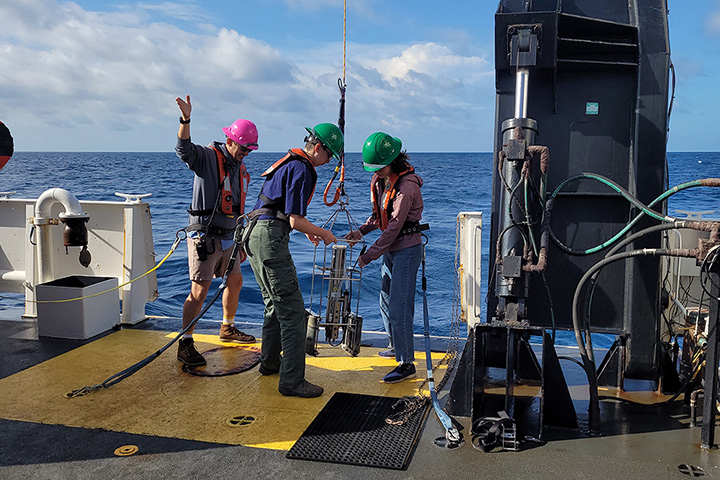
But nothing prepared her for spending a week 140 miles offshore, studying the ocean floor 1,500 feet deep on a 186-foot research vessel.
“I don’t even think there’s enough words to explain it,” said the double major in Marine Science and Environmental Science. “It changes your view of what being on the water can look like. When you are out in the open water and you don’t see land, it kind of opens up your world a bit.”
Panepinto was one of six Stockton students who took part in a first-time series of cruises with the National Oceanic and Atmospheric Administration (NOAA) ship Nancy Foster in July 2024. The students lived and worked with a NOAA crew as it mapped the ocean floor off the coast of South Carolina. Alanna Weeks, Mackenzie Briggs and Seth Sims sailed from July 5 to July 12, and Dustin Horensky, Hannah Elliott and Panepinto traveled from July 15 to July 21.
“It is rare that undergraduate and graduate students get an opportunity to sail aboard a NOAA vessel,” said Julia Wallace, a physical scientist with NOAA’s Office of Coast Survey. “These cruises enable groups of students from several academic institutions to experience hydrographic mapping operations, life at sea aboard a NOAA vessel, and network with other marine science students from across the country.”
Stockton was one of only six schools invited by NOAA to send students.
“Stockton is one of a handful of schools in the country that offer undergraduate training in the field of hydrography and marine technology,” said Steve Evert, the director of Stockton’s Marine Field Station in Port Republic.
Hydrography is the science of measuring and describing the physical features of bodies of water and their adjacent lands. The NOAA cruises used multibeam sonar to scan and map the ocean floor as part of a project titled Seabed 2030 that aims to map the entire ocean floor by 2030. During each of the cruises, the vessel used a powerful multibeam sonar to scan and map the sea floor by creating a grid with dozens of lanes, often 40 miles long, to build a bathymetric three-dimensional image of the sea floor.
Students Partner with Police to Analyze Community Interactions
A unique partnership between the Hamilton Township Police Department and a Stockton professor is giving Criminal Justice students a chance to explore how local policing impacts the community.
Over the past year, Sgt. Craig Clayton, a 2004 Stockton graduate, has collaborated with Criminal Justice Professor Jess Bonnan-White to develop a quantitative study examining interactions between residents and law enforcement. The results will guide policy briefs and recommendations for the department.
“I mean, frankly, the best part about it is that nobody else is doing this,” Clayton said. “I don't like being behind the 8-ball when it comes to how policing is done, and this puts Hamilton ahead of the curve. I think most agencies would benefit from a partnership with a university. We're just one of the first to knock on that door.”
The collaboration aims to expose students to real-world policing challenges while strengthening connections between Stockton, the local community and law enforcement.
“I take my hat off to the department for being willing to put themselves out there,” Bonnan-White said. “A lot of departments don’t reach out to academics. But we’re often asking the same questions, so why not put our heads together?”
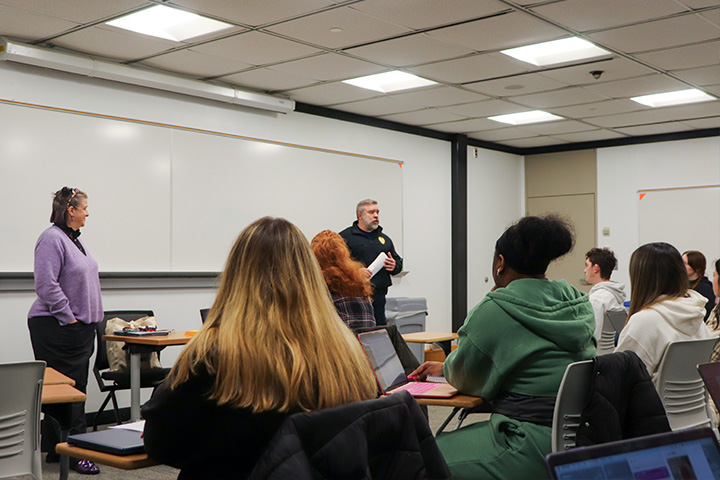
Clayton first envisioned the project while earning his master’s degree, when he realized the department lacked a way to measure community satisfaction. He later connected with Bonnan-White during a leadership academy session she attended as part of her research through Stockton’s Community-Based Social Research Collaborative.
Together they created a community survey asking Hamilton residents to rate their satisfaction with police encounters, 911 accessibility and local concerns such as traffic enforcement. Students in Bonnan-White’s undergraduate service-learning course helped collect 450 responses at town meetings and community events.
“We tried to show residents this project isn’t just the police but undergrads learning how to serve their communities,” Bonnan-White said. “People valued seeing students out there doing high-impact work.”
Clayton said residents “lit up” when students joined coffee-and-doughnut socials and other outreach events. Criminal Justice major Stephanie Gonzalez, of Vineland, said the experience reinforced her goal of becoming a police officer.
“With this survey, it’s a step closer to better and safer communities,” Gonzalez said. “Many people feel there’s a barrier between them and law enforcement, and projects like this help bridge that gap.”
Graduate students in Bonnan-White’s “Criminological Theory” course will now analyze the data and develop policy suggestions for the department. The project will continue cyclically — undergraduates will distribute new surveys, and graduate students will study the results each year.
“The beauty of it is, when we do 2026’s survey, we’ll know if we improved,” Clayton said. “That’s what I’m most excited about — using the numbers to make a difference.”
Bonnan-White added, “Working with the public to find solutions together is the ideal of what community policing is.”
Professor’s Deep-Sea Discovery Could Help Find Alien Life
Lauren Seyler believes the search for alien life in the universe begins much closer to home — on the bottom of the ocean.
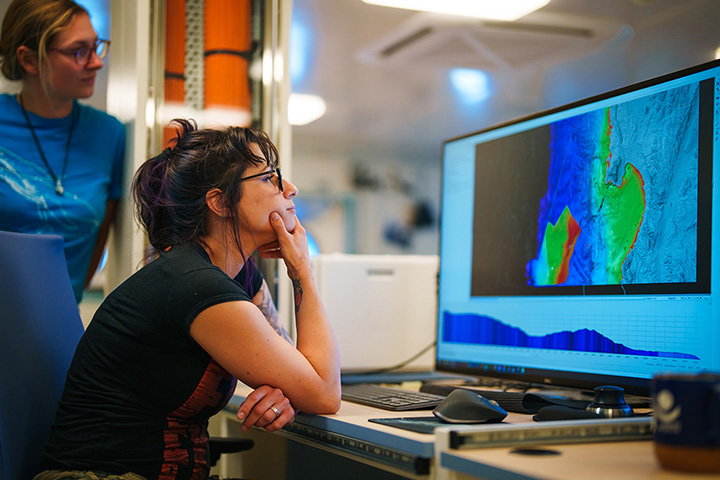
The Stockton University assistant Biology professor — who also studies astrobiology — spent three weeks last summer off the coast of Chile as co-principal scientist on a research expedition studying the ocean floor near the Atacama Trench, at depths of more than 9,300 feet.
The goal? Locate methane seeps, areas where chemical energy is released, and use a remote-operated vehicle (ROV) to collect sediment and video showing how life forms in places where sunlight can’t reach.
“Methane is a great source of energy,” Seyler said. “Sources of chemical energy are truly alien. It’s such an interesting way of looking at life because it’s so different from what we see in our day-to-day lives. It’s a very different world down there, and that’s what I love about it.”
Astrobiology, which studies how life originated on Earth and could exist elsewhere, merges chemistry, physics, geology, biology and oceanography. Seyler, who will teach an astrobiology course at Stockton in fall 2024, said the field explores how life develops from chemistry into cells and multicellular organisms.
The expedition gave Seyler and other scientists the chance to study ecosystems that depend on chemical energy, like methane, to create microbes and other life. But a delay in receiving a research permit shortened their mission from two weeks to six days.
“That was insane considering all the things we had planned to do,” she said.
Using multibeam sonar to map the ocean floor, the team searched where tectonic plates collide and methane seeps are likely to form. The ROV crawled along the seafloor at less than 2 mph, scanning for ridges or fissures where gas might bubble up.
“It’s like climbing up a mountain with one flashlight. You have a very narrow field of view,” Seyler said.
Working 20- to 22-hour days, the scientists watched the ROV feed for hours, hoping to spot a seep.
Finally, on day four, they found what Seyler called “a little oasis on the bottom of the sea floor” — a methane seep alive with bacteria mats, tube worms, clams and sea pigs. The find marked the deepest and northernmost seeps discovered off Chile.
“Habitats like methane seeps prove that chemical energy can sustain more than just microbes,” she said. “You could have larger organisms, like animals, sustained off this energy, which makes the search for life on other worlds even more exciting.”
The ROV collected dozens of sediment samples that Seyler brought back to Stockton. She plans to work with students to extract and sequence DNA from microbial communities and collaborate with scientists in Spain and Florida to study their chemical compounds.
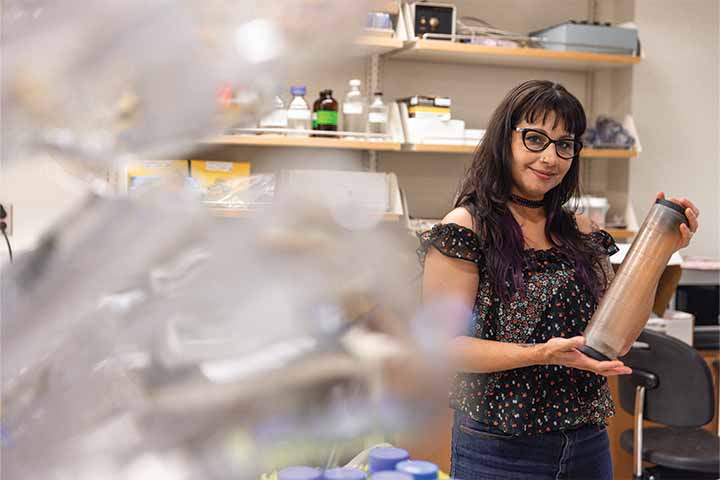
“We are so fortunate Dr. Seyler was able to lead this exciting expedition,” said Amanda Norvell, dean of Stockton’s School of Natural Sciences and Mathematics. “She brings that science back into our labs and classrooms so students can be part of this fundamental work.”
For Seyler, the experience was transformative. “I had never led an expedition like this before,” she said. “I learned what I’m capable of and gained confidence in my ability to work under pressure. But what I’ve always been interested in is what’s at the bottom — what’s in the mud.”
Professor, alum publish case study together
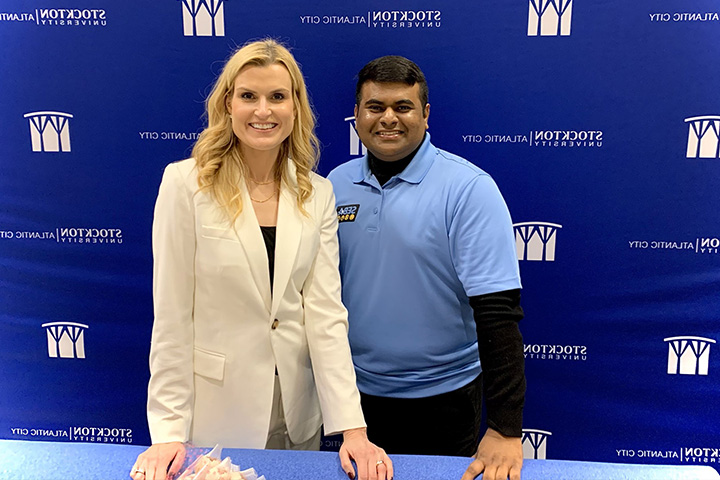
A shared passion for global leadership turned into a published achievement for Joy Jones, associate professor of Business Administration – Management, and alumnus Rifat Mahmud ’22, ’23. Their case study, featured in "People Management Skills in Practice: A Case Study Collection” was completed during a period of personal challenge for Jones, who faced a cancer diagnosis during the research.
In a November 2024 Q&A, Jones reflected on how the collaboration came together — and how teamwork, resilience and mentorship shaped the project’s success.

